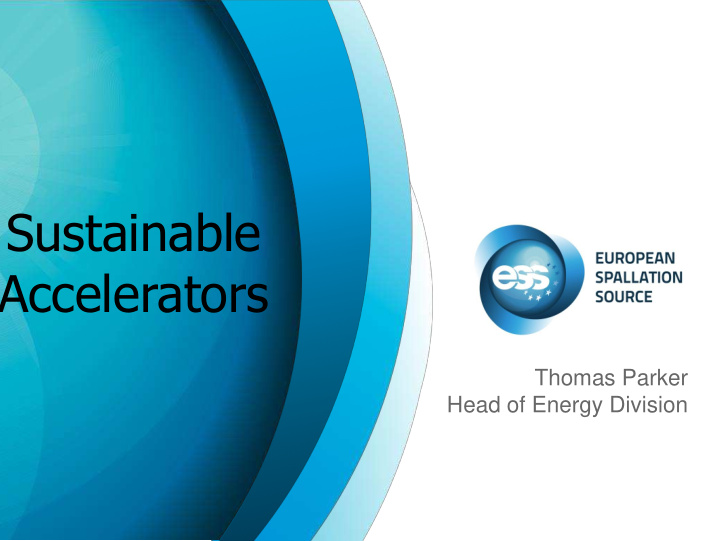



Sustainable Accelerators Thomas Parker Head of Energy Division
The Permanent Energy Crisis • Energy “ crisis ” 1973, officially ended when it became permanent • Harrisburg, Sellafield, Chernobyl, Fukoshima, Energiwende • Climate change • => Energy = sustainability challenge
Science- technology - energy • New levels of scientific knowledge have often been reached as a result of technological breakthrough. • Telescopes and accelerators are examples of Research Infrastructure. • For each level of scientific breakthrough, the requisite infrastructure tends to need more and more energy.
The Sustainability Balance of Science Value of Science • Knowledge Cost of Science • Applications • Investment • Externalities, e.g. • Operations clusters • Externalities, e.g. environmental impact Each new accelerator project must show that it will contribute more good (sustainability) than it will cost.
Example of an argument of the sustainability value of an accelerator. Neutrons for Energy Research Energy Storage Carbon Capture Photovoltaics and Storage Extreme Materials Superconduction Photosynthesis Fuel Cells
Energy Inventory Spallation Neutron Source at Oak Ridge National Laboratory At 1 MW beam from accelerator Accelerator incl klystron gallery Accelerator cryo 150 GWh power 140 GWh waste heat Accumulator ring Cooling Target cryo Target
Energy Inventory ESS Pan-European Project 2002 5 MW beam on target Accelerator incl Coolling klystron gallery Accelerator cryogenics Accumulator- ring 610 GWh power Target Station 580 GWh waste heat Target cryogenics
Energy Inventory ESS 2012, 5 MW Instruments Accelerator incl 1 MW Ion Source klystron gallery Target 17 MW 3 MW Cooling cryo Target station Accelerator 8 MW 3 MW 2 MW cryogenics 4 MW 270 GWh renewable power 20°C 40°C 90°C 200 GWh recycled
Responsible – Renewable – Recyclable Responsible CO 2 : - 30 000 t. Renewable • Benchmark CO 2 : -120 000 t. for future projects • Based on local conditions • Not perfect Recyclable CO 2 : - 15 000 t.
How to do heat recycling 1. Don ’ t. Efficiency – avoid creating the heat 2. 2 nd law. High temperature cooling 3. Create uses of low grade heat
Temperature is Money (2 nd law for managers) Hot Stuff! Helium Compressors Klystrons Money gives science
Energy for Sustainable Science Workshop Catherine Césarsky, Atomic Energy and Alternative Energies Commission: “ The Research Infrastructures are very appropriate tools for addressing scientific issues to confront global Climate and Energy challenges Beatrix Vierkorn-Rudolph, Federal Ministry of Education and Research, Tyskland: “ Increasing energy efficiency is a major goal ”
Executive Summary • Research Infrastructures (RIs) => R&D =>materials, processes and products => sustainability • More collaboration between RIs • ESFRI => opportunity to coordinate and support in EU • RIs can act as training ground, test bed and billboard for energy management
Conclusions • Science is dependent on technology, research infrastructure. • The technology of science needs increasing energy. • Science must demonstrate benefit (sustainability) in excess of cost to attract funding. • Energy is percieved to have a higher cost than the price (energiwende, emissions cap and trade). • As energy demands increase, and the negative perceptions of energy production as well. • => Energy will weigh more on the cost side of new science investment. • “ Responsible, Renewable, Responsible ” is neither perfect nor universal, but a benchmark for future devlopment.
Thank you for listening. Thomas Parker Head of Energy Division
Recommend
More recommend